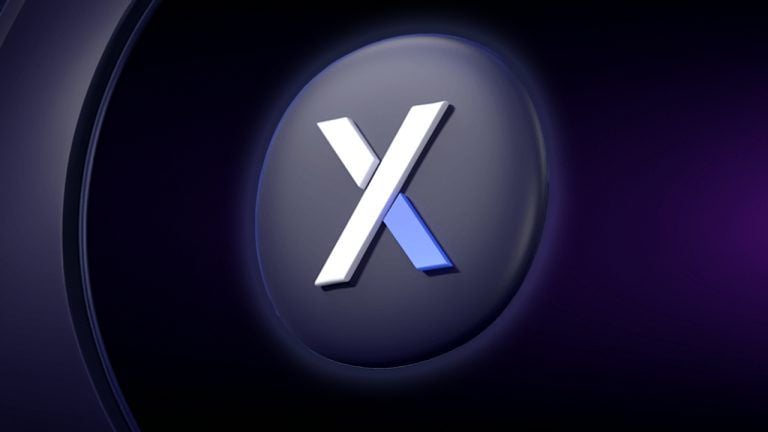 Stablecoins, the cryptocurrencies pegged to fiat currencies like the U.S. dollar to keep their value steady, can still face failures. Several well-known examples demonstrate that maintaining stability is more challenging than it appears. So, how does something designed to be ‘stable’ unravel? A Historical Review of Stablecoin De-Pegging Incidents There’s no doubt that these stablecoins […]
Stablecoins, the cryptocurrencies pegged to fiat currencies like the U.S. dollar to keep their value steady, can still face failures. Several well-known examples demonstrate that maintaining stability is more challenging than it appears. So, how does something designed to be ‘stable’ unravel? A Historical Review of Stablecoin De-Pegging Incidents There’s no doubt that these stablecoins […] Real-world-asset (RWA) tokenization infrastructure provider Securitize has chosen Wormhole as its official interoperability provider to facilitate cross-chain transfers for all tokenized assets on its platform. The partnership aims to enhance liquidity and accessibility for tokenized assets while bridging traditional and decentralized finance systems. Securitize Enhances Tokenized Asset Liquidity Through Wormhole Integration According to the announcement […]
Real-world-asset (RWA) tokenization infrastructure provider Securitize has chosen Wormhole as its official interoperability provider to facilitate cross-chain transfers for all tokenized assets on its platform. The partnership aims to enhance liquidity and accessibility for tokenized assets while bridging traditional and decentralized finance systems. Securitize Enhances Tokenized Asset Liquidity Through Wormhole Integration According to the announcement […] Bitgo plans to launch its new stablecoin, USDS, in January 2025, offering a unique model that rewards liquidity providers. The announcement was made by Bitgo CEO Mike Belshe during an interview with Coindesk at the Token2049 event in Singapore. The stablecoin will be backed by U.S. Treasury bills, overnight repos, and cash, aiming to create […]
Bitgo plans to launch its new stablecoin, USDS, in January 2025, offering a unique model that rewards liquidity providers. The announcement was made by Bitgo CEO Mike Belshe during an interview with Coindesk at the Token2049 event in Singapore. The stablecoin will be backed by U.S. Treasury bills, overnight repos, and cash, aiming to create […] The rise of decentralized finance is particularly strong in regions with weak banking systems, such as Sub-Saharan Africa, Latin America, and Eastern Europe. Experts believe this is because defi offers financial tools and services traditionally unavailable to people in these areas. Experts point to the user-friendliness and security of defi compared to traditional financial institutions […]
The rise of decentralized finance is particularly strong in regions with weak banking systems, such as Sub-Saharan Africa, Latin America, and Eastern Europe. Experts believe this is because defi offers financial tools and services traditionally unavailable to people in these areas. Experts point to the user-friendliness and security of defi compared to traditional financial institutions […]

The top 10 memecoins are struggling as safe-launch tokens capture significant market attention and investor funds.
The memecoin market witnessed explosive growth in 2024, but its biggest players — including Dogecoin (DOGE), Shiba Inu (SHIB), Pepe (PEPE) and Dogwifhat (WIF) — are struggling to hold value anywhere near their yearly highs.
It’s not just top memecoins that are faltering. Numerous industry insiders have told Cointelegraph the current wave of tokens is having knock-on effects across the industry, with one saying memecoins have “sucked the life out of this bull run.”
Data released by Lookonchain on Sept. 2 revealed just how tough the market is for the incumbent pack of memecoins, which are down an average of 63%.
 Arthur Hayes, co-founder of crypto exchange Bitmex, has warned of a scenario where bitcoin could “slowly leak lower towards $50,000” and “altcoins could dive deeper into the gutter.” Focusing on the impact of dollar liquidity and Federal Reserve policies, Hayes remains cautiously optimistic about the long-term outlook, expecting future monetary easing to benefit crypto. Arthur […]
Arthur Hayes, co-founder of crypto exchange Bitmex, has warned of a scenario where bitcoin could “slowly leak lower towards $50,000” and “altcoins could dive deeper into the gutter.” Focusing on the impact of dollar liquidity and Federal Reserve policies, Hayes remains cautiously optimistic about the long-term outlook, expecting future monetary easing to benefit crypto. Arthur […]

Stakers with Lido, Frax, Origin and Mantle can “restake” with the DeFi protocol.
Decentralized finance (DeFi) protocol YieldNest is launching a new liquid staking derivative (LSD) called ynLSDe designed to capture restaking yield from EigenLayer, according to an Aug. 21 announcement.
The token “will allow the holders of Ether staked with Lido, FRAX, Origin Protocol, or Mantle to earn additional yield… through restaking,” YieldNest said. Lido, FRAX, Origin, and Mantle are decentralized Ethereum staking platforms, each of which issues its own LSD.
Restaking involves taking Ether (ETH) that has already been staked — posted as collateral with a validator in exchange for rewards — on the Ethereum network and using it to secure other protocols simultaneously. The premise is that in exchange for taking on additional risk, restaking can considerably enhance rewards.
 Justin Sun, founder of the Tron blockchain ecosystem, clarified the reasons behind his drive to bring meme coins to the Tron network. According to Sun, the Tron blockchain has the upper hand compared to other chains, being home to $60 billion USDT. “No other blockchain protocol’s got a liquidity pool this massive,” Sun stressed, explaining […]
Justin Sun, founder of the Tron blockchain ecosystem, clarified the reasons behind his drive to bring meme coins to the Tron network. According to Sun, the Tron blockchain has the upper hand compared to other chains, being home to $60 billion USDT. “No other blockchain protocol’s got a liquidity pool this massive,” Sun stressed, explaining […] Decentralized exchange Dydx has announced a significant upgrade to its chain, introducing new features designed to enhance market liquidity and security. The update, set for release this autumn, marks the largest change to the Dydx Chain since its launch. Dydx Introduces Permissionless Market Listings and Megavault in Upcoming Chain Overhaul According to the announcement, the […]
Decentralized exchange Dydx has announced a significant upgrade to its chain, introducing new features designed to enhance market liquidity and security. The update, set for release this autumn, marks the largest change to the Dydx Chain since its launch. Dydx Introduces Permissionless Market Listings and Megavault in Upcoming Chain Overhaul According to the announcement, the […] Bitmex co-founder Arthur Hayes predicts bitcoin will reach $100K by late 2024 and could hit $1 million by 2025. He attributes this to U.S. Treasury liquidity injections and anticipates a “glorious” crypto bull market in 2025. Hayes has outlined various factors driving explosive growth in bitcoin and broader financial markets. Arthur Hayes Predicts Bitcoin Surge […]
Bitmex co-founder Arthur Hayes predicts bitcoin will reach $100K by late 2024 and could hit $1 million by 2025. He attributes this to U.S. Treasury liquidity injections and anticipates a “glorious” crypto bull market in 2025. Hayes has outlined various factors driving explosive growth in bitcoin and broader financial markets. Arthur Hayes Predicts Bitcoin Surge […]